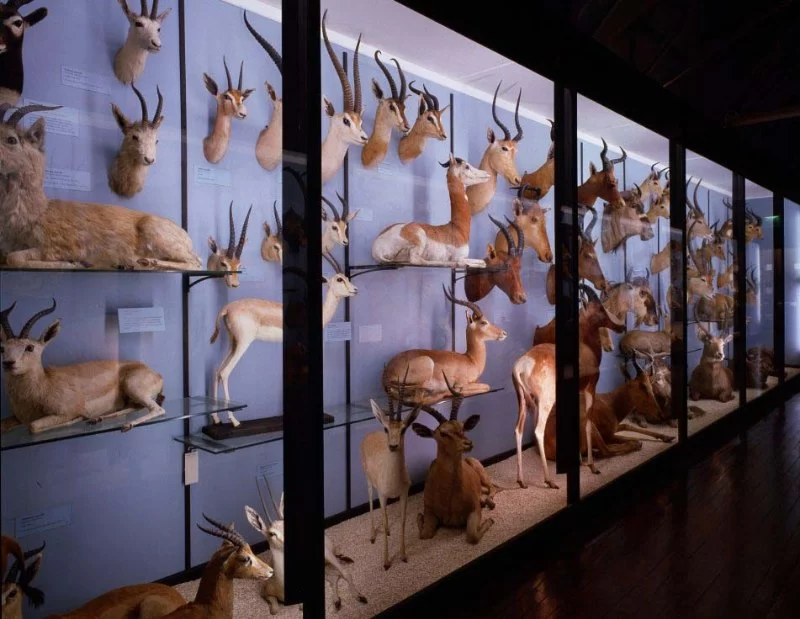
The Top Taxidermy and Natural History Museums for the Curious
- why-these-museums-matter
- signature-collections-and-what-to-look-for
- real-journeys-field-notes-from-the-road
- ethics-preservation-and-the-modern-museum
- how-to-plan-an-itinerary-like-a-pro
- family-tips-accessibility-and-quiet-spaces
- photography-souvenirs-and-behind-the-scenes
- when-to-go-seasonal-events-and-night-programs
- ready-to-explore-next-steps
1. Why These Museums Matter
Ask any seasoned traveler why they return to natural history halls, and you’ll hear the same answer: perspective. The Top Taxidermy and Natural History Museums for the Curious aren’t dusty repositories of the past; they’re living classrooms where anatomy, ecology, and culture intersect. In one afternoon, you can trace a species’ evolution, examine the craft behind a lifelike mount, and grasp how field science informs conservation today. For curious visitors, these museums are launchpads—places that spark better questions about the world.
Unlike art museums that rotate shows frequently, many natural history collections anchor their stories in permanent dioramas. Those immersive scenes—bison thundering across prairie grass, snow leopards perched on crag—blend scientific accuracy with theater. They’re part documentary, part time capsule. When planned well, a city break that centers on The Top Taxidermy and Natural History Museums for the Curious adds depth to any itinerary, whether you’re in New York for a weekend or touring Europe over two weeks.
Travelers also find practical value: bad weather can’t ruin a museum day, and these spaces welcome multigenerational groups. If you’re building a culture-forward route, use the museum visit as your narrative spine, then add food halls, parks, and bookshops within a 20-minute walk. That rhythm keeps energy up and turns The Top Taxidermy and Natural History Museums for the Curious into more than a checklist—into a memorable story.
2. Signature Collections and What to Look For
Iconic Dioramas (USA): In New York, the dioramas of North American mammals have set the global standard for a century. Look for “sightlines” the curators intended: your eye should move from the foreground taxidermy to painted backgrounds with matching light temperatures. In Chicago, the Field Museum’s taxidermy birds show feather structure with astonishing precision—stand to the side to catch iridescence you’ll miss head-on. In Los Angeles, the La Brea Tar Pits Museum pairs fossil context with reconstructed fauna, giving taxidermy a geological backbone.
European Depth: London’s Natural History Museum leans into evolutionary storytelling; Paris’s Grande Galerie de l’Évolution arranges animals in a sweeping procession, a theatrical take that still respects taxonomy. Berlin’s Museum für Naturkunde balances classic mounts with cutting-edge paleontology. For travelers chasing the Top Taxidermy and Natural History Museums for the Curious, this triangle—London, Paris, Berlin—offers range: Victorian craft, French scenography, and German research rigor.
Regional Gems: Smaller collections can surprise. In Vancouver, mounted specimens are paired with Indigenous ecological knowledge; in Reykjavík, you’ll find North Atlantic birds contextualized by wind and light. In the American West, state museums often feature pronghorn and mountain sheep in habitats that mirror nearby landscapes—perfect for linking a museum morning with an afternoon hike.
What to Scan in Labels: Note the collector, date, and locality. These three details turn a mount into data. Specimens gathered before major environmental changes (dams, urbanization) are baseline records. When you travel with this lens, The Top Taxidermy and Natural History Museums for the Curious feel less like showrooms and more like long-term research partners.
3. Real Journeys: Field Notes from the Road
On a rainy March day in Manhattan, a mother and her teenage son ducked into the museum to kill an hour. Three hours later, they were still tracing predator-prey relationships across the dioramas, arguing about camouflage tactics and leafing through the field guide they’d just bought. Later that week, the same pair rented binoculars in Central Park to spot a red-tailed hawk they’d first noticed as a mount. That’s how The Top Taxidermy and Natural History Museums for the Curious extend beyond neon exit signs—they seed real-world adventures.
Another traveler, a photographer from Lisbon, planned Paris around the Grande Galerie. She timed her visit for golden hour, when the clerestory windows throw soft light onto the procession of animals. Her images captured not just specimens, but space and air—a dreamlike quality impossible at noon. She wrote later that those frames reshaped her practice; she stopped chasing cities and started chasing light, always beginning with a museum’s architecture and ending with the mounts that inhabit it.
In Berlin, a biology student told us he visited the same wolf mount twice: once before a field course in Brandenburg, and once after. The second time, he noticed how shoulder height, stride, and paw structure corroborated fresh track patterns he’d observed in the wild. He said, “The specimen became a teacher.” If you travel with notebooks, you’ll recognize that feeling—the way The Top Taxidermy and Natural History Museums for the Curious turn observation into skill.
4. Ethics, Preservation, and the Modern Museum
Today’s institutions are transparent about provenance, permits, and conservation status. Many mounts were collected decades ago under different rules; modern acquisitions prioritize natural mortalities, donations, or exchanges with wildlife authorities. Look for panels explaining how curators choose educational value over spectacle. Some museums now include Indigenous voices in habitat narratives, balancing scientific taxonomy with cultural relationships to animals and landscapes.
Taxidermy itself has evolved: arsenic-laden pastes are out; inert, conservation-grade materials are in. Climate-controlled cases slow deterioration. Curators monitor pest activity (dermestid beetles are the arch-nemesis) and light exposure to protect pigments. When a museum invites visitors to peek into the conservation lab, take that detour. Seeing an expert humidify a rumpled wing or re-adhere whiskers with archival glue deepens respect for the craft and assures travelers that The Top Taxidermy and Natural History Museums for the Curious are guardians, not trophy rooms.
If you’re choosing where to spend a precious vacation day, browse the institution’s mission and collections pages ahead of time. Ethical clarity is a strong signal. For tailored suggestions that fit your values and timeframe, consult Refined Travel for updated exhibits and behind-the-scenes program schedules.
5. How to Plan an Itinerary Like a Pro
Build a Core-Plus Model: Start with one anchor museum in a city, then add two “complementary” stops within walking or transit distance—perhaps a science center and a historic library. This model keeps your day varied while you stay immersed in discovery. When mapping The Top Taxidermy and Natural History Museums for the Curious, consider transit load: an hour of standing diorama-side pairs well with a café break, then a lighter gallery.
Time Your Visit: Arrive at opening to savor the quiet. Families often find the first 90 minutes magical—kids can sit on floors without crowd pressure. Photographers should scout angles first, shoot later; the best lines of sight are rarely the obvious ones. If the museum offers timed entry for blockbuster exhibits, book that slot last so you aren’t rushed.
Layer the Story: Before you go, pick a theme: migration, camouflage, or predator-prey. Try to “track” that theme across three different exhibits. You’ll leave with a narrative rather than a jumble of facts. Refined Travel can suggest thematic routes in major cities (e.g., “Urban Raptors,” “Arctic Adaptations”) and patch them into broader weeklong plans.
Tickets and Passes: City museum passes sometimes include priority lanes or evening hours. For travelers squeezing The Top Taxidermy and Natural History Museums for the Curious into a stopover, late sessions can be golden—quieter halls, warmer light, and less fatigue.
6. Family Tips, Accessibility, and Quiet Spaces
For Kids: Turn each hall into a micro-quest: “Find three animals with hooves,” “Spot a nocturnal hunter,” “Which specimen has the longest tail?” Give older kids a sketchbook; drawing forces attention to structure and scale. Many museums offer touch carts with replica skulls or pelts—ask staff what’s scheduled the day you visit.
Accessibility: Most leading institutions publish accessibility maps with elevator locations, seating areas, and sensory-friendly times. If you’re neurodivergent or traveling with someone who prefers low-stimulation environments, plan a route that alternates bustling galleries with quieter mineral or geology rooms. The Top Taxidermy and Natural History Museums for the Curious increasingly host relaxed hours; Refined Travel can compile dates so your visit matches your needs.
Food & Breaks: Museum cafés are convenient, but neighborhoods often hide better options a block away. Pack a refillable bottle; many venues provide fountains. If you’re balancing nap schedules, choose a museum near a park for a restorative picnic between halls.
7. Photography, Souvenirs, and Behind-the-Scenes
Shooting Etiquette: No flash unless signage allows. Stabilize against railings, not cases. Move after each frame to avoid blocking others. For the cleanest compositions, align your lens parallel to the case glass and watch reflections from ceiling lights. The Top Taxidermy and Natural History Museums for the Curious are surprisingly photogenic if you treat them like landscapes: foreground (mount), middle (prop), background (painted horizon).
Souvenirs with Purpose: Field guides, foldable maps, and museum-commissioned prints travel well and extend the learning. Skip plastic toys in favor of postcards you’ll mail to yourself from each city—date them and note your favorite specimen. In a year, you’ll have a personal field record of your route.
Go Deeper: Many museums run “collections open houses” and taxidermy restoration talks. These are catnip for the curious. Ask staff about volunteer-science programs (feather identification, insect surveys) that tie your visit to active research back home.
8. When to Go: Seasonal Events and Night Programs
Winter brings calmer galleries and special lectures; spring weekends can be lively with family programming. Summer nights sometimes unlock rooftop stargazing or adult-only events with live music among the dioramas. Autumn pairs beautifully with paleontology releases and new exhibit rotations. If your travel window is fixed, target at least one after-hours session—The Top Taxidermy and Natural History Museums for the Curious feel different at night: fewer crowds, longer shadows, and a hint of theater.
Travel planners at Refined Travel track these calendars and can match them to your city hops so you never miss a limited-run installation or a curator-led walk-through.
9. Ready to Explore? Next Steps
Let your next itinerary pivot around curiosity. Choose one flagship institution, add a regional gem, pick a theme, and leave space for serendipity. If this guide to The Top Taxidermy and Natural History Museums for the Curious stirred your wanderlust, keep the momentum: gather dates, book timed entries, and map cafés and parks for restorative breaks. For an itinerary that weaves ethical storytelling, architectural light, and family-friendly pacing, consult Refined Travel for tailored recommendations and curated museum circuits. When you’re ready to turn inspiration into tickets and timetables, plan the journey that makes you look up—and look closer.







 Owens Creek Campground4.0 (77 reviews)
Owens Creek Campground4.0 (77 reviews) Pine Lake clothing optional RV camping4.0 (7 reviews)
Pine Lake clothing optional RV camping4.0 (7 reviews) Waterloo / Finger Lakes KOA Holiday4.0 (186 reviews)
Waterloo / Finger Lakes KOA Holiday4.0 (186 reviews) Brown Road RV Park4.0 (23 reviews)
Brown Road RV Park4.0 (23 reviews) Daniel Boone Conservation Area Camping4.0 (2 reviews)
Daniel Boone Conservation Area Camping4.0 (2 reviews) Six Mile Lake Campground4.0 (22 reviews)
Six Mile Lake Campground4.0 (22 reviews) Exclusive Travel Packages for First-Class Travelers: A Guide to Luxury Vacations
Exclusive Travel Packages for First-Class Travelers: A Guide to Luxury Vacations Refined Travel Experiences in Southeast Asia: Explore Luxury & Unique Destinations
Refined Travel Experiences in Southeast Asia: Explore Luxury & Unique Destinations How to Make the Most of Luxury Vacation Deals: Expert Tips for Savvy Travelers
How to Make the Most of Luxury Vacation Deals: Expert Tips for Savvy Travelers How to Enjoy a Refined Travel Experience in the Mountains
How to Enjoy a Refined Travel Experience in the Mountains Refined Travel Itineraries for Art and Culture Lovers: Explore the World of Art and History
Refined Travel Itineraries for Art and Culture Lovers: Explore the World of Art and History Most Luxurious Destinations for Honeymooners: Top Spots for Romance and Luxury
Most Luxurious Destinations for Honeymooners: Top Spots for Romance and Luxury